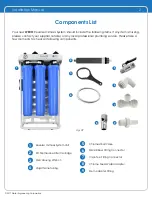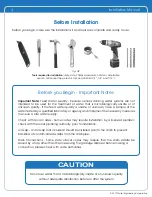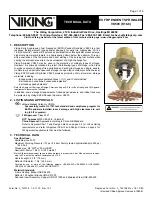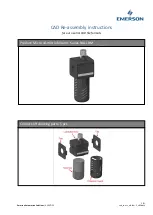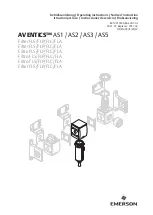
1
Installation Manual
© 2017 Water Engineering Corporation
INTRODUCTION
Congratulations! By choosing
WECO
Reverse Osmosis (RO) water purification system for your
home, you have not only ensured the highest quality, healthy drinking water, you have also
selected the most efficient and convenient system in the industry.
While the elegant, yet simple, design complements any décor, the aesthetic qualities are only the
beginning. We designed the premier RO system as a highly efficient, easily maintained addition to
every home and business.
The RO System filters multiple substances harmful to humans and pets including, impurities, residual
chlorine, heavy metals, chemicals, and filterable, viruses to name a few, and also removes 96
percent of ions in the water.
Before installing your new RO System, please read the instructions thoroughly and make sure you
have all the necessary tools at hand.
Your new Reverse Osmosis Drinking Water system used a combination of filtration technologies to
reduce unwanted contaminants in a water supply. The following steps combine to give you the
best in clear sparkling drinking water.
Mechanical Filtration – The sediment pre-filter will remove the larger particles such as silt, rust, and
scale. Its 5-micron (equal to 0.0002 inch) nominal rating helps to give maximum life to the RO
membrane and carbon filter.
Activated Carbon Pre-filters- The activated carbon in a pre-filter will remove any chlorine that
may be present in the feed water.
This pre-treatment is also necessary for membrane protection in chlorinated water.
Reverse Osmosis Membrane – The RO membrane is the heart of the filtration system. It is designed
to reduce the dissolved mineral content of the water. Minerals picked up in the environment by
the water are measured as Total Dissolved Solids (TDS). In the reverse osmosis process, dissolved
minerals are separated from the incoming water (feed water) to produce the product water (the
permeate). The excess minerals are rinsed to drain (the reject water). The spiral-wound
construction of the RO membrane provides maximum surface area for water production and is
less susceptible to fouling by particulate matter, turbidity, and colloidal materials.
Inline Carbon Absorption Post-filter- The activated carbon post-filter cartridge contains carbon
particles with a vast network of pores. The tremendous surface area of these pores (typically
800-1,200 square meters per gram of carbon) gives the carbon very good absorption sites for
chlorine as well as other substances that contribute to tasted and odors. The product water from
the membrane and the holding tank passes through the inline carbon post-filter on the way to the
dispensing faucet. The activated carbon post-filter reduces tastes and odors that may pass
through the systems. It adds a final “polish” to the water.
Booster Pump Models – The booster pump consists of the pump, transformer unit, and the tank
shut-off switch. The tank shut-off switch will shut down the pump when the water production is not
necessary, such as when the tank is full, to prevent prematurely burning out the pump. Booster
pumps are used when there is little or no water pressure (below 30 psi is considered very low water
pressure). The booster pump increases and maintains your water pressure at the optimum level for
maximum rejection of total dissolved solids (TDS) and filtered water production.



